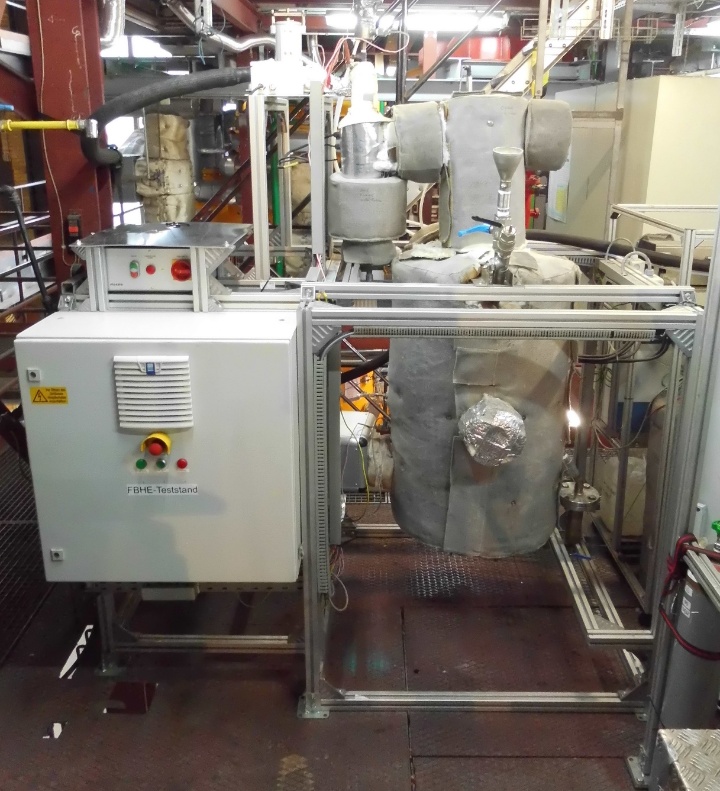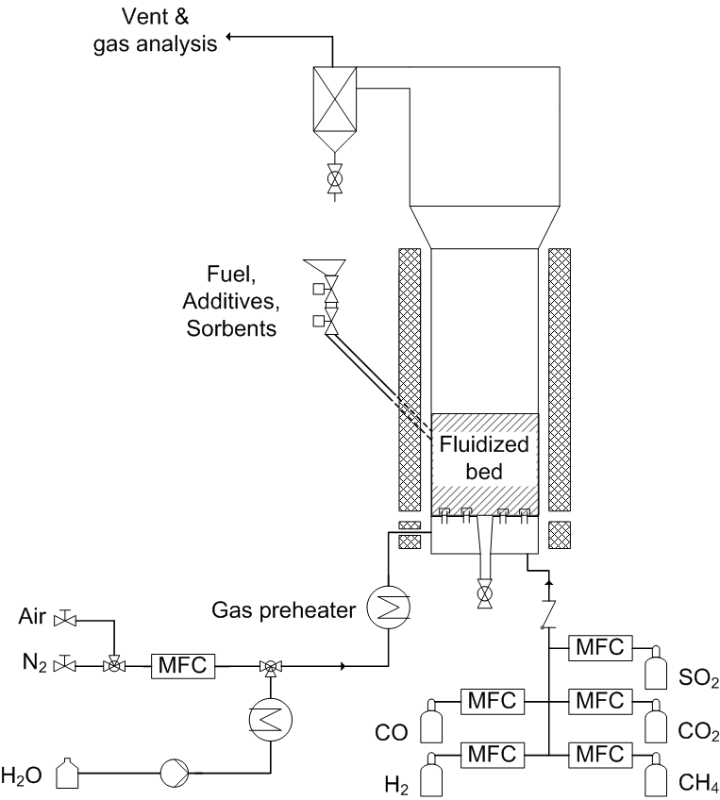Facility description
The electrically heated bench scale fluidized bed facility was built for fundamental investigations under bubbling fluidized bed conditions (e.g. deposit formation on fluidized bed coolers, high-temperature desulphurization with solid sorbents, as well as combustion, gasification and pyrolysis behavior of fuels).
In addition to fluidization with air, nitrogen or steam, other gas constituent such as SO2, CO, CO2, H2 and CH4 can be added to enable required reaction conditions for a large variety of scientific investigations.
Plant data
| Regime | Bubbling fluidized bed |
| Fluidization velocity | 0,1 – 0,5 m/s |
| Diameter | 70 mm (fluidized bed), 155 mm (freeboard) |
| Reactor height | 1 m |
| Inventory in fluidized bed | up to 1,5 kg |
| Temperature | up to 950 °C |
| Pressure | atmospheric |
| Fuel dosing | Gravimetrically controlled via a gas lock |
With the solid feeder different solid fuels, e.g. coal, biomass, waste as well as additives and sorbents etc. can be dosed to the facility. Gas volume flows are regulated with mass flow controllers. The water mass flow is dosed to the steam generation via a volumetric pump.
Pressures and temperatures are recorded continuously. Gases are extracted after the cyclone for analysis. The following gas measurement techniques are available:
| online gas measurement | O2, CO, CO2, H2, CH4, C2-C4, SO2, NOX, N2O, NO2, (HCl, NH3) |
| wet-chemical measurement | Tar, H2S, HCl, NH3 |
Other measurements on request.
The following figure shows a simplified schematic of the facility:
The facility is heated electrically by external heating shells. For the gases air, nitrogen and steam, a preheater is available. After preheating, a further heat up of the gas up to 950 °C takes place in the windbox. Other gas components are directly heated in the windbox.
Contact

Jörg Maier
Dipl.-Ing.Head of Department Firing Systems (KWF)



